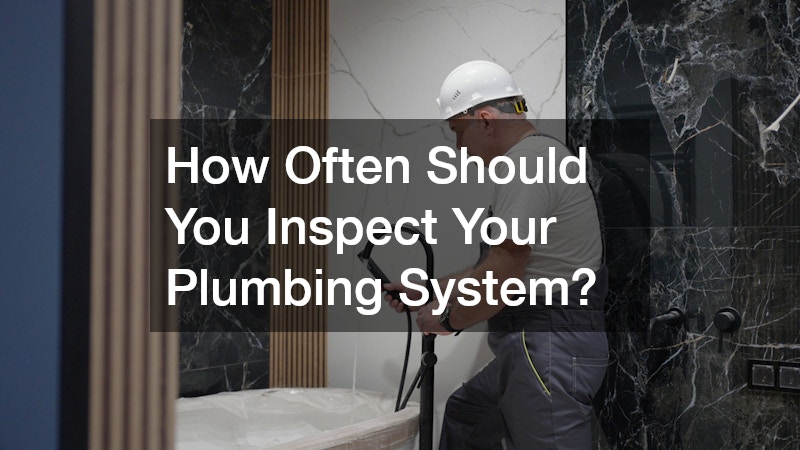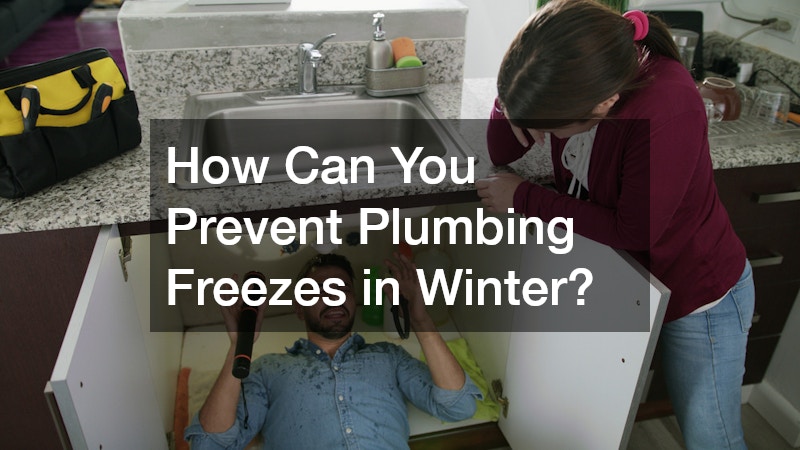Becoming a new homeowner is exciting, but it also comes with its fair share of responsibilities — and plumbing is a big one. Whether you’re moving into a brand-new build or an older home, understanding how your plumbing works and knowing what to watch out for can save you from major headaches down the road. This article offers practical advice for new homeowners to confidently handle routine maintenance and be prepared for plumbing emergencies. From preventing clogged drains to knowing when to call a licensed plumber, we’ll cover the essentials so you can keep your home’s plumbing system in top shape.
Plumbing issues like a clogged drain or a leaky pipe can feel overwhelming if you don’t know where to start. It’s not just about convenience either — plumbing problems can quickly lead to water damage and costly repairs. That’s why learning a bit about plumbing maintenance and having a go-to emergency plumber or drain cleaning company on speed dial is crucial. Throughout this guide, you’ll find actionable tips and insights that will empower you to protect your investment and keep your home running smoothly.
How Often Should You Inspect Your Plumbing System?

The Importance of Regular Inspections
One of the most important pieces of advice for new homeowners is to stay proactive about plumbing inspections. A regular checkup can catch small problems before they turn into emergencies. Plumbing systems, including pipes, fixtures, and appliances, naturally wear down over time. Corrosion, leaks, and blockages can sneak up on you, so scheduling routine inspections helps maintain peace of mind.
Creating a Plumbing Maintenance Schedule
Setting up a maintenance schedule is an easy way to stay on top of your home’s plumbing health. Aim for a thorough inspection at least once a year, ideally in the spring or fall. This allows you to prepare for seasonal challenges like winter freezes or summer water use spikes. If your home has a septic system, incorporate septic tank maintenance into your schedule as well. A good rule of thumb is to have your septic tank inspected every three years, with pumping every three to five years depending on use.
Signs It’s Time for a Professional Inspection
Even if you don’t see obvious problems, certain signs indicate it’s time to call a licensed plumber for a professional inspection. These include slow drains, unusual noises like banging or gurgling in your pipes, and unexplained spikes in your water bill. Ignoring these could lead to bigger issues that require emergency plumber services. Scheduling a professional early on helps avoid costly repairs and keeps your home safe.
What Are the Most Common Plumbing Issues Homeowners Face?
Leaky Faucets and Pipes
Leaky faucets and pipes are some of the most common plumbing issues new homeowners encounter. Aside from being annoying, leaks waste water and can cause damage over time. Sometimes a simple washer replacement fixes the drip, but persistent leaks often require a licensed plumber’s attention to avoid mold growth or structural damage.
Running Toilets
A running toilet is another frequent problem that wastes gallons of water daily. The cause could be a faulty flapper valve, chain, or fill valve inside the tank. While there are DIY fixes for this, if the issue persists, a local plumber can quickly diagnose and repair the problem.
Clogged Drains
Clogged drains are notorious for disrupting daily life. Whether it’s the kitchen sink, bathroom, or laundry, blockages happen when debris accumulates in your pipes. Knowing when to tackle clogged drain repairs yourself and when to call drain cleaning contractors or a drain cleaning company is part of becoming a savvy homeowner.
How Can You Prevent Clogged Drains?
Best Practices for Drain Maintenance
Prevention is key with clogged drains. One of the best pieces of advice for new homeowners is to adopt good habits like not pouring grease down the kitchen sink and using drain strainers to catch hair and food particles. Regularly flushing drains with hot water helps keep pipes clear.
Identifying Materials That Cause Blockages
Certain materials are common culprits in drain blockages. Hair, food scraps, soap scum, and foreign objects often build up and cause clogs. Avoid flushing anything other than toilet paper down toilets and be mindful of what goes down your drains. Understanding this helps you reduce the frequency of calling drain cleaning services.
Effective Tools for Clearing Clogs
For minor clogs, tools like plungers or drain snakes can be highly effective. Knowing how to properly use these tools can save you time and money. However, stubborn clogs or recurring issues often require professional intervention from drain cleaning contractors who have specialized equipment.
What Should You Do in Case of a Burst Pipe?

Immediate Steps to Minimize Damage
A burst pipe is a homeowner’s nightmare, but acting fast can make a big difference. First, try to contain the water if possible by using buckets or towels to prevent damage to floors and furniture. Quickly move valuables away from the affected area.
Safely Shutting Off Water Supply
Next, locate your home’s main water shut-off valve and turn it off immediately to stop the flow. Knowing where this valve is before an emergency is critical advice for new homeowners. Some valves can be tricky to turn, so consider testing yours occasionally.
Contacting Professional Help
Once the water is off, call an emergency plumber right away. Burst pipe repairs often require specialized knowledge and tools to fix correctly and prevent further damage. An emergency plumber can assess the situation, repair the pipe, and help with cleanup recommendations.
How Do You Manage Water Pressure Issues?
Signs of Water Pressure Problems
Low or fluctuating water pressure can indicate underlying plumbing issues such as leaks, clogs, or problems with your water supply line. High water pressure, on the other hand, may cause damage to pipes and fixtures. Watch for symptoms like slow flow from faucets or sudden bursts of strong water pressure.
Adjusting Water Pressure Regulator
Many homes have a water pressure regulator valve. Adjusting this can sometimes solve pressure problems, but if you’re unsure, it’s best left to a licensed plumber. Improper adjustments can lead to bigger issues.
When to Call a Professional
If you notice persistent water pressure problems, it’s time to contact a local plumber. They can perform diagnostic tests and recommend repairs or replacements as needed to ensure your plumbing system operates safely and efficiently.
What Are the Essentials of Water Heater Maintenance?
Regular Flushing and Cleaning
Water heaters require periodic flushing to remove sediment buildup that can reduce efficiency and shorten lifespan. This is a crucial maintenance step new homeowners should schedule annually or as recommended by the manufacturer.
Checking the Anode Rod
The anode rod inside your water heater protects it from corrosion. Checking and replacing this rod every few years extends the unit’s life. This task is often best handled by a licensed plumber.
Insulating the Heater for Efficiency
Insulating your water heater and the first few feet of hot water pipes helps maintain temperature and reduces energy bills. This simple upgrade is an easy way for new homeowners to improve efficiency.
How Can You Prevent Plumbing Freezes in Winter?

Insulating Pipes
Freezing pipes are a common winter concern. Insulating exposed pipes, especially in basements, crawl spaces, or unheated areas, is an effective preventive measure. Pipe insulation sleeves or heat tape are popular options.
Maintaining a Consistent Home Temperature
Keeping your home’s temperature consistent, even when you’re away, helps prevent frozen pipes. Let faucets drip slightly during extreme cold to relieve pressure buildup from freezing water.
Draining Outdoor Water Fixtures
Before winter hits, disconnect hoses and drain outdoor faucets and sprinkler systems to avoid freeze damage. This maintenance step can save costly repairs in the spring.
What Environmental Practices Can Improve Plumbing Efficiency?
Installing Low-Flow Fixtures
One of the easiest ways to reduce water use is by installing low-flow faucets, showerheads, and toilets. These fixtures maintain performance while using significantly less water, saving money and resources. Modern low-flow options are designed to provide strong water pressure and effective cleaning without wasting water. Many municipalities even offer rebates or incentives for upgrading to these eco-friendly fixtures, making it a smart investment for new homeowners looking to lower their utility bills and environmental footprint.
Water Recycling Systems
For environmentally conscious homeowners, water recycling systems like greywater reuse can reduce waste. These systems collect water from sinks or showers to irrigate landscaping, which decreases the demand for fresh water and can lower water bills. While installing a greywater system may require a licensed plumber or specialist, the long-term benefits include reduced water consumption and support for sustainable living practices. Some homeowners also explore rainwater harvesting systems for outdoor use, further enhancing their water conservation efforts.
Reducing Water Waste
Simple habits like turning off the tap while brushing teeth, taking shorter showers, and fixing leaks promptly contribute to overall water conservation. A small drip from a leaking faucet might seem insignificant, but over time it can waste hundreds of gallons annually. Regularly inspecting your plumbing and addressing leaks quickly not only conserves water but also prevents damage and higher utility costs. These small daily changes align with sustainable homeownership and demonstrate how mindful water use benefits both the environment and your wallet.
How Do You Properly Use a Plunger?
Types of Plungers and Their Uses
Not all plungers are created equal. A cup plunger works well for sinks, while a flange plunger is designed for toilets. Knowing which one to use is a handy bit of advice for new homeowners.
Step-by-Step Plunging Technique
To clear a clog effectively, create a tight seal over the drain, then plunge with steady, forceful strokes. Repeat several times, and be patient—it may take a few attempts.
When Plunging Isn’t Enough
If plunging doesn’t work, it’s time to call a plumber. Persistent clogs may require professional drain cleaning services or clogged drain repairs to avoid pipe damage.
What Are the Benefits of Having a Home Plumbing Toolkit?

Essential Tools Every Homeowner Needs
Basic tools such as a pipe wrench, adjustable pliers, plumber’s tape, and a drain snake empower new homeowners to tackle minor repairs and maintenance tasks. Having these tools on hand means you’re prepared for common plumbing hiccups like tightening a leaking faucet or clearing a small clog before it becomes a bigger issue. Investing in a quality toolkit can also boost your confidence in handling simple fixes and reduce the stress that often comes with unexpected plumbing problems.
Cost-Effective DIY Repairs
With the right tools and know-how, many small plumbing jobs can be done at home, saving money on service calls. Learning how to use your toolkit properly not only cuts down on repair costs but also helps you respond faster to issues. For example, fixing a dripping faucet or sealing a minor leak can be quick and inexpensive with the proper equipment. However, it’s important to recognize your limits to avoid causing more damage or voiding warranties on appliances.
Knowing Your Limits
Some repairs, like major leaks or septic tank maintenance, are best left to licensed plumbers. Attempting complex repairs without the proper skills or tools can lead to costly mistakes and safety hazards. Understanding when to DIY and when to call a professional helps protect your home and wallet. Additionally, licensed plumbers have access to specialized equipment and knowledge, ensuring that plumbing issues are resolved correctly and efficiently the first time.
Conclusion
For new homeowners, plumbing can seem intimidating, but a little knowledge and preparation go a long way. Following this advice for new homeowners will help you stay ahead of common plumbing issues, from routine maintenance like septic tank maintenance to emergency situations like burst pipes. Having a relationship with a reliable local plumber or emergency plumber ensures you’re never left scrambling when problems arise.
Remember, prevention is always better than repair. Regular inspections, proper drain care, and timely maintenance can extend the life of your plumbing system and avoid costly clogged drain repairs or emergency fixes. Don’t hesitate to contact licensed professionals for complicated jobs—they bring expertise and peace of mind.
Ultimately, understanding your home’s plumbing system and knowing when to take action empowers you to protect your investment and enjoy your home worry-free. Whether it’s learning the right plunging technique or scheduling your next drain cleaning services, these steps set you up for long-term success as a homeowner.


